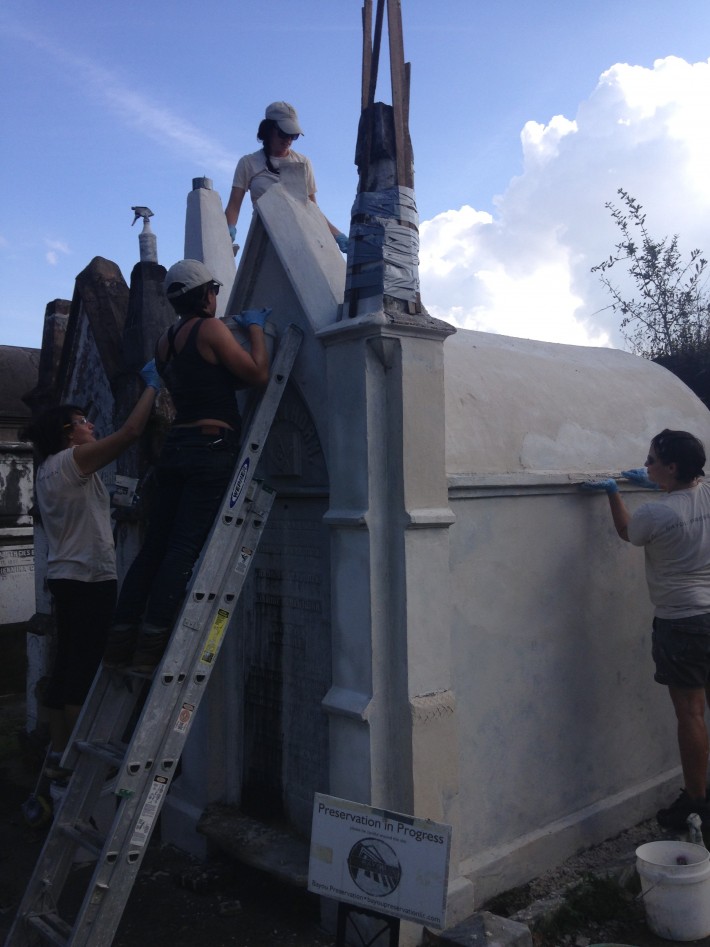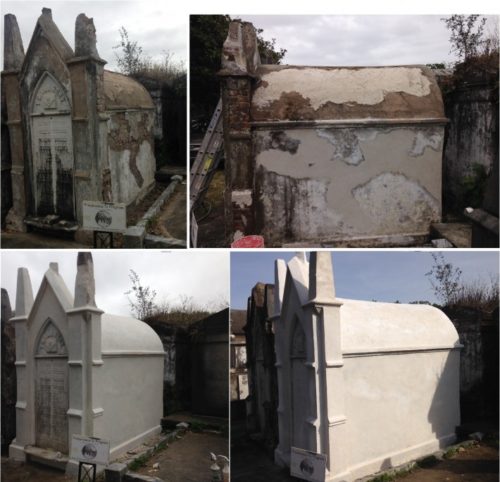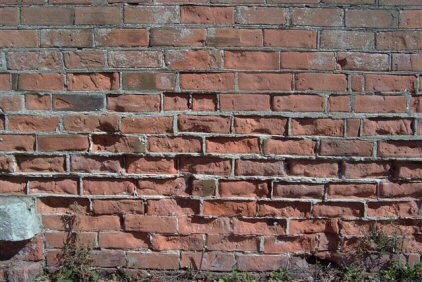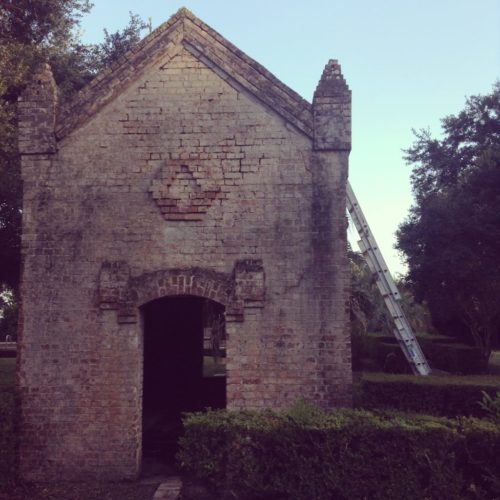cemetery conservation in New Orleans
It’s a well known fact that New Orleans cemeteries are unique, most notably for their above ground brick tombs. Most places in the US perform burials in ground, with mausoleums being an exception for the very wealthy. New Orleans, Savannah, and Charleston are the three most notable cities that have historic above ground cemeteries. These three cities were formed as colonies by European powers very early on (1718, 1733, and 1670, respectively). England, France, and Spain, all have traditions of building above ground tombs, though lower economic classes typically still got an in ground burial. Unfortunately for them, New Orleans, Charleston, and Savannah are all located in subtropical climates. They are all at risk for flooding, hurricanes, and extreme heat and humidity. These factors also dramatically increased the risk of diseases such as yellow fever, malaria, and dysentery in early colonial phases. For all these reasons, the new inhabitants of these places quickly learned that all of their dead must be buried in above ground tombs. The brick tomb design has an added benefit when built in a subtropical climate: It basically functions as an oven, heating up to extremely high temperatures during the summer months. Within a year human remains are completely decomposed. New Orleans law dictates a year and a day must pass after a burial before a tomb may be opened. Due to the widespread influence of Spanish culture, above ground tombs are also found in Central America and the Caribbean, even when it is not climate related.
This burial system has created a somewhat unique niche industry of cemetery conservation, which I studied in school and have made some sort of a career of. My job is a sort of hybrid of brick masonry, historic preservation, materials conservation, and archival research that is very satisfying to my brain which is equal parts grunt laborer and nerdy research junkie. I will gladly spend equal time moving bricks around in the sun, and staring bleary eyed at microfilm for several hours reading handwritten burial records from the 19th century.
Although the company I work for does a range of monument conservation and masonry conservation work, we receive most of our contracts for family tombs. Many of these are located in the Lafayette #1 cemetery, though we work in many more historic cemeteries in the city, and in other cities in southern Louisiana. The Lafayette Cemetery is located in the Garden District. It dates to the 1830’s, and many burials in it are from this era, during the yellow fever epidemic when infant mortality rates were extremely high. It is still actively used by many old New Orleans families, and these people make up a lot of our clients.
The basic principle behind conservation work is to retain as much of the original material as possible, and if material must be replaced, every effort should be made to use historically accurate replacements. Old bricks are extremely soft, but if they are cared for correctly they will last many more generations. Many old bricks in New Orleans were made from Mississippi river mud. We do not pressure wash. We do not apply paint of any kind, because it seals in moisture and actually decays the structure from the inside out. Brick structures are intended to breathe. Bricks absorb moisture from rain as well as from the ground, and this moisture then needs to be allowed to evaporate. If there is a layer of latex paint on the outside, the moisture is trapped inside. Another basic principle is that the mortar should always be softer than the bricks. When the bricks absorb moisture, they expand, and a super hard modern mortar such as Portland cement will restrict this movement, causing the face of the brick to pop off and quickly become useless as a structural unit. Portland cement might be the biggest single agent of destruction to historic brick. We use traditional lime based mortars, lime based plaster and stucco coatings, and finally a lime wash or “whitewash” on top of the entire tomb.
Most of our cemetery projects follow a basic pattern. First, we do a conditions assessment. This includes extensive photo documentation, measurement, a written report, and sometimes material samples. If the client requests genealogical research, I put on my khaki safari hat and Lara Croft Tomb Raider shorts and race over to the microfilm library at the public library, where I gleefully pore over internment records, marriage and death certificates, and U.S. census records. From these one can learn not only who is buried in a tomb, but their ethnicity, profession, and sometimes who their “consorts” were. (Look up placage, if you haven’t already). This is typed up and delivered to the family for their records.
When work begins on a tomb, first it is cleaned thoroughly. Any oil, acrylic, or latex paint gets stripped off, and Portland cement gets removed if possible (it’s often not possible. This is why it should never be used on historic structures!) Any plants and other “biological growth” are removed and sprayed with a conservation-friendly bio growth inhibitors. After the structure has been thoroughly stripped and scrubbed and cleaned any structural flaws are repaired, and new bricks are laid as necessary. The lime based mortar takes around 5 days to cure depending on weather. The marble is cleaned first with water, and increasing from there in degrees of chemical harshness. Marble that is deteriorating (called “sugaring”) has a consolidant product applied to it to arrest the decay. Fresh coats of plaster are added, and when that has also cured, at least 3 coats of lime wash are applied. The great thing about using the traditional lime based materials is that they are all made of basically the same ingredients, differing only in ratios. So when the process is complete, the mortar, plaster, and all the coats of lime wash chemically bond to each other and make a shell around the whole building. If the building receives one new coat of lime wash a year, this shell will last generations, protecting the structure as well as allowing it to breathe. And lime wash looks magical. Though most people instinctively stick to white, research shows that in the 18th and 19th New Orleans cemeteries were extremely colorful. Caribbean hues such as turquoise, yellow, and hot pink were common, and any of these colors can easily be made by adding pigment to the lime wash. This shouldn’t be surprising, considering New Orleaneans have never been particularly somber about the move to the great beyond. It is still a custom for family members to do routine maintenance to their loved ones’ tombs on All Saints Day, though in modern times there are fewer people applying lime wash and more people slapping on some latex paint…
To illustrate how lovely this traditional process can look, I give you the example of the Van Horn tomb. Located in Lafayette #1, the Van Horn tomb is of the gothic style, which is relatively rare in New Orleans. (tomb style tends to be somewhat of a microcosm of overall architectural tastes in a region.) The Van Horn tomb resembles a tiny gothic cathedral, and sits next to an identical tomb owned by a different, but socially related family. This is a great before and after illustration, as the tombs were in nearly identical condition when we started.
A lot of people think working in a cemetery would be creepy, or depressing. I wish I could refer them to the tiny ancient lady I met in a cemetery outside of Merida, Mexico. I noticed her merrily going about her job, which appeared to be moving around WHEELBARROWS full of skulls and femurs, and organizing them in pleasing decorative ways on the shelves that are covered with thousands of human remains. See? It’s fine.
Although dealing with human remains IS NOT in my job description, I suppose one does have to be free of a squeamish nature when choosing to spend many hours surrounded by thousands of dead people. Although sure, you have your stray grave robbing here, your extra skeleton limb there, I try to take it in stride. The perks are many. I still prefer them to living tourists (joke!) I welcome the occasional friendly cemetery squatter. And I will always appreciate New Orleans as a place where “career goth” is a legitimate life goal, not just a wardrobe choice.









Thanks for the info. I have steps iat my stucco Mediterranean home that are red stone. The facade that holds them up is cement painted white. They need repainting. Do I whitewash them or use white cement paint? Thanks JoAnn Merse, 125 East Oakridge, Metairie,la. 70005. It’s 1 of 13 Spanish stucco old homes4 of which are on Oakridge with terracotta roofs designed by architect 80-109yrs. Old
Hi JoAnn, I am sorry I just saw your comment! This depends on the material that the facade is made of. If it is a very hard, modern cement, then a cement paint will be your lowest-maintainence option. If they are made of older, traditional lime-based mortar than I do not recommend using cement paint as it does not allow these more fragile materials to breathe. In this case you can use lime wash (white wash) or any vapor-permeable coating of your choosing.